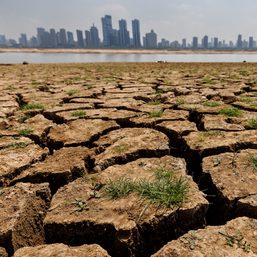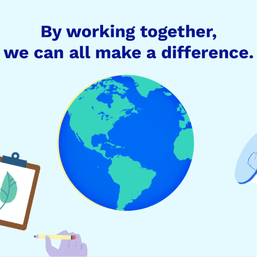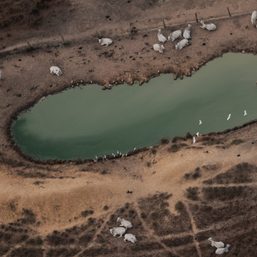SUMMARY
This is AI generated summarization, which may have errors. For context, always refer to the full article.
![[OPINION] Momentum for climate justice](https://www.rappler.com/tachyon/2022/01/TL-Odette-Climate-Justice-January-21-2022-Part-2.jpg)
Read: [OPINION] Loss and damage from Typhoon Odette/Rai
The last decade has seen incredible growth in the global climate justice movement, and with that, more and more spaces for environmental defenders to push for action against climate change. The creation of a loss and damage facility, as we pointed out in Part 1 of this article, is one such demand.
This is manifested also in the continuing United Nations Climate Change Conferences, the last one held in Glasgow, Scotland, this November. The Paris Agreement, a landmark international treaty and one of the main legal documents resulting from the annual climate change conferences, has already been adopted by 196 States worldwide. Through the Paris Agreement, these 196 States have committed to drastically reduce global greenhouse gas emissions and limit global warming to well-below 2 degrees Celsius compared to pre-industrial levels. This will absolutely require changes in legislation, business, and ways of life across all sectors of society, for which environmental lawyers and other environmental human rights defenders will play an important role.
Climate justice and human rights
Significantly, according to the 2020 Global Climate Litigation Report (“Litigation Report”) of the United Nations Environment Program & Sabin Center for Climate Change Law, recent years have also seen a rapid increase in the number of cases filed related to climate change, with the number of cases almost doubling in just three years . In 2017, the Litigation Report counted 884 climate change cases pending in 24 countries. In 2020, this number rose to an impressive 1,550 cases pending in 38 different countries.
On the other hand, it is also true that environmental defenders continue to meet with fierce resistance, especially in the Philippines. According to the international human rights organization Global Witness, over 227 land and environmental defenders were murdered in the year 2020 – making 2020 the most dangerous year on record for environmental defenders [Global Witness, Last Line of Defence (September 2021)]. Of this number, more than half of the killings took place in just three countries – Colombia, Mexico, and the Philippines (id, p. 14). The Philippines ranked third highest in the world in terms of the number of environmental defenders killed in 2020, with a total of 29 killed (id, p. 11). From 2016 to 2020, a total of 166 land and environmental defenders were killed in our country
Global Witness’ report on the year 2020 also highlights that, as in previous years, a disproportionate number of the attacks on land and environmental defenders were made against indigenous people. The report stated that, despite the fact that indigenous people make up only 5% of the world’s population, they were the victims of over a third of all fatal attacks against environmental defenders in 2020. Of these, what Global Witness called the “most shocking” attack involved the mass murder of 9 Tumandok indigenous people and the arrest of 17 others in raids conducted by the military and police in Panay Island, Philippines on 30 December 2020.
Furthermore, the risks faced by environmental defenders go beyond the documented killings. All the time, environmental defenders are threatened, physically and verbally attacked, harassed, red-tagged, and criminalized.
For instance, the child rights group Save Our Schools Network (“SOS”) has been documenting increasing red-tagging incidents against Lumad schools in Mindanao. These schools and the Lumad communities that they serve have long been involved in the push for greater environmental protection of Mindanao’s natural resources, and environmental protection has been an important part of these schools’ curricula. According to SOS, between July 2016 and December 2019, over 162 Lumad schools in Mindanao were either forcibly closed by the Philippine government, or compelled to shut down due to an increase in the number of targeted attacks made against them by military and paramilitary forces. In 2020 and 2021, continued human rights violations caused even more school closures. Currently, nearly all of the 215 Lumad schools in Mindanao have stopped operating.
Both the growing need for environmental defenders, as well as the persistent risks faced by them, point to the same conclusion – we need more people to join the climate justice movement. We need to encourage lawyers and law students to practice environmental law, and to enhance their capacity to do so. We need to increase the opportunities for communities in the Philippines to know their environmental rights and gain meaningful access to climate and environmental justice. We need to build a bigger and stronger network of leaders, experts, advocates, and community members to advance the cause of environmental and climate justice.
Building capacity for climate justice
It is against this context that a small pilot project for law schools, called the Climate Justice Capacity Initiative (“CJCI”) was recently launched. CJCI is a field-building strategy, which seeks to use law schools as one take-off point to help enhance the capacity of environmental defenders in the Philippines. Essentially, the project will provide participating law students with training in environmental law and opportunities to provide paralegal assistance to lawyers and communities dealing with environmental and climate change issues.
The first direct objective of CJCI is to encourage the increase of environmental and climate justice lawyers in the Philippines by developing the capacity of law schools to train students in environmental law, and providing more opportunities for students to become familiar with the practice. Law students participating in the CJCI will be given training in substantive, legal, and governance topics on the environment and climate change, as well as training in the legal and paralegal skills relevant to environmental advocacy. This theoretical training will be supplemented by opportunities for practical application. The idea is for the participating law schools, through partnerships with environmental lawyers, groups, and communities within their regions, to expose their students to real-life environmental cases and find ways through which their students can provide paralegal assistance and training to communities in need. The law schools may also choose to provide their students opportunities to produce information and communication materials, contribute to scientific and legal research on climate change, and be a part of national and regional environmental advocacy campaigns.
The second direct objective of CJCI is to foster connections between law schools and communities dealing with environmental and climate change issues. CJCI aims to empower and support the development of specialized environmental law clinics geared towards providing communities in need with legal support and training. In doing so, the project hopes to ultimately contribute to the empowerment of poor and marginalized communities and to assist them to uphold their environmental rights.
CJCI is a collaboration between ClientEarth, Stichting Foundation for International Law for the Environment, Manila Observatory, and a consortium of Ateneo law schools. The five schools participating in the project are: Ateneo de Manila in Metro Manila, Ateneo de Naga in Naga City, Xavier University in Cagayan de Oro, Ateneo de Davao in Davao City, and Ateneo de Zamboanga in Zamboanga City. Being located in different parts of the Philippines, the schools will be able to adapt the field-building program to the local challenges uniquely affecting the communities within their respective regions. At the same time, the project provides a platform for these different schools to connect their local issues to environmental and climate change issues affecting the Philippines as a whole.
CJCI is a pilot program that can be replicated in other law schools in the Philippines. In fact, we highly encourage other law schools to consider adopting the project or developing a similar project. Certainly, the need for initiatives to encourage and protect our environmental defenders will only grow as the reality of climate change becomes bigger and our country prepares to face more challenges related to the environment and climate change. – Rappler.com
Tony La Viña is the Associate Director for climate policy and International relations of Manila Observatory. He also teaches law and is former dean of the Ateneo School of Government.
Joy Reyes and Vanessa Vergara are human rights and climate justice lawyers affiliated with the Manila Observatory.
Meggie Nolasco is the executive director of Salugpongan Schools and the PinoyMedia Center.
Add a comment
How does this make you feel?



![[ANALYSIS] After Glasgow: What’s next for climate?](https://www.rappler.com/tachyon/2021/12/cop26.jpg?resize=257%2C257&crop_strategy=attention)
There are no comments yet. Add your comment to start the conversation.